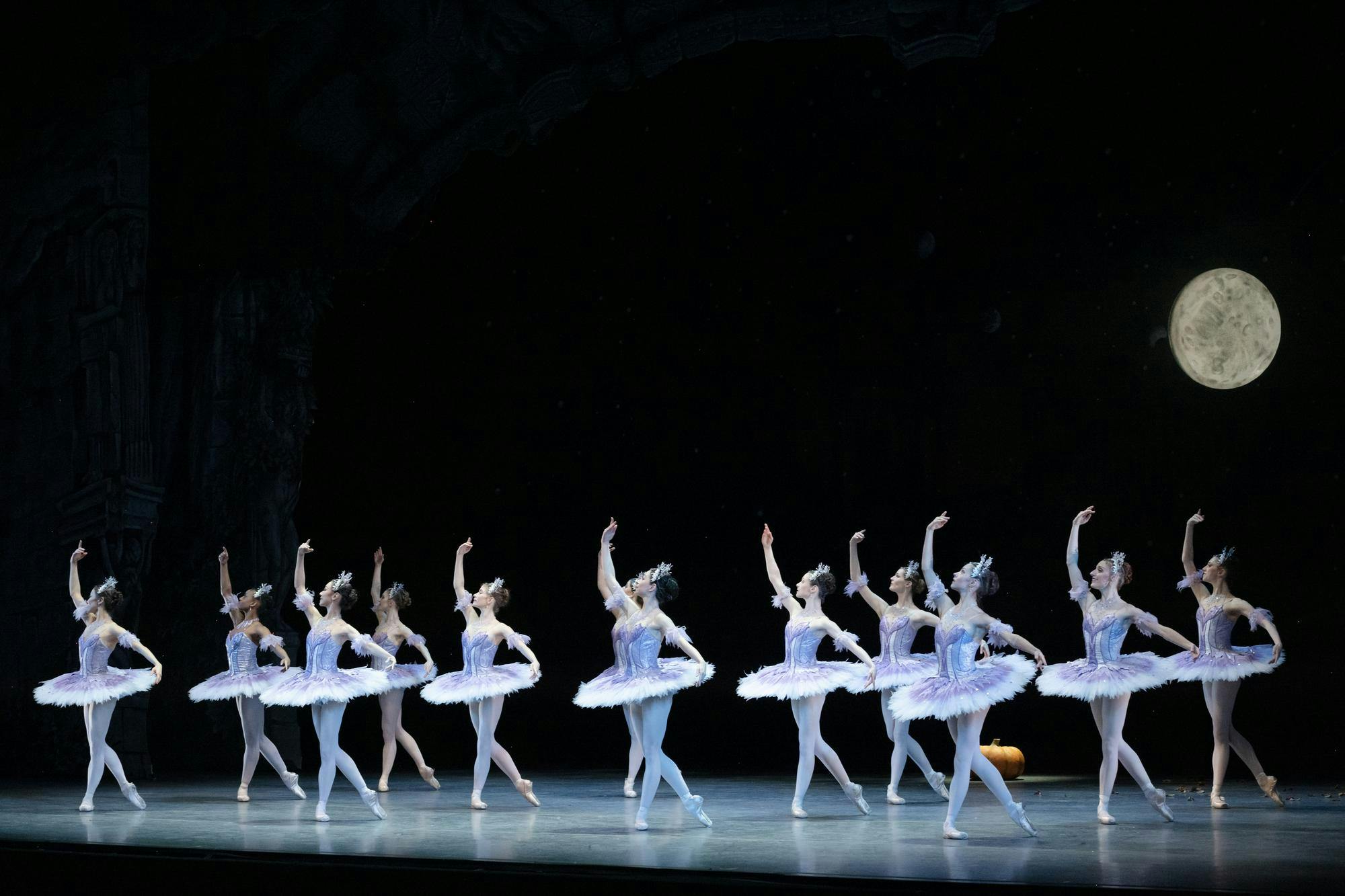Fantasy and reality intertwined at the March 14 premiere of the Boston Ballet’s 2024 production of “Cinderella,” where every scene sparkled with breathtaking dance and a spellbinding set, and a classic love story was performed delicately and dreamily. The stage of the Citizens Bank Opera House went from a dusty living room to a grand ballroom, a place of hopelessness to one of romance. Through graceful movement and magical stagecraft, the familiar story of a turn of fate created a feeling of wonder the audience enjoyed for a dreamlike two and a half hours. The production, which ran from March 14–24, was a captivating journey into enchantment, fitting perfectly into the company’s impressive repertoire.
Cinderella is a folk tale with thousands of variations about a romantic story of a girl’s shift from a servant to a princess. The 1950 Disney animated film was based on French author Charles Perrault’s version of the story, Cendrillon, which introduced components such as the fairy godmother and the glass slipper to the tale. The original premise, dating back to Greek philosopher Strabo’s “Rhodopis” sometime between 7 B.C.E. and 23 A.D., involved a girl who loses her sandal and eventually marries the king after he finds the shoe in his possession and discovers her to be the owner. The story has gone through many iterations across cultures and thousands of years, though it always centers around a lost shoe and a metamorphosis from rags to riches.
Sir Frederick Ashton's 1948 choreography for Cinderella, celebrated as a "masterpiece of dance" by Boston Ballet's artistic director Mikko Nissinen, brought the timeless tale to life. The Boston Ballet production, featuring glittering costumes sourced from London’s Royal Ballet company, captured the essence of the story while adding its own unique touches.
Overall, the ballet was mostly quite similar to the Disney adaptation of the story but differed in some notable ways. Act One of the ballet began in the home of Cinderella (Ji Young Chae), her father (Graham Johns) and stepsisters (Paul Craig, John Lam). The stepsisters sewed and argued while Cinderella sat quietly, dusting and taking care of household chores. There was no evil stepmother and Cinderella’s father was alive and well. The stepsisters’ power over Cinderella in her father’s presence was questionable, though their behavior was portrayed more as foolish and less as cruel. Cinderella’s hopeful character shone through her actions, contrasted with her stepsisters' frivolous behavior. Her generosity to a mysterious woman in need was rewarded by magic in the face of adversity.
Instead of singing “Bibbidi-Bobbidi-Boo” and flicking a magic wand to prepare Cinderella for the ball, the fairy godmother conjured the fairies of the four seasons. The Fairy Spring (Kaitlyn Casey) bounced across the stage in a leafy green dress, embodying the blossom of a flower. Next is the Fairy Summer (Haley Schwan), who twirled more relaxedly in pink tulle, seemingly basking in warm rays of sun. The Fairy Autumn (Chisako Oga) moved powerfully as a storm, rapidly shedding leaves from her fiery orange dress. Lastly, the Fairy Winter (Lauren Herfindahl) arrived in icy blue solemnity, her dancing delicate and precise. Each of these dances was animated by Prokofiev’s distinctive scores for the seasons and features not only the fairies but also two junior dancers standing in costume. Act One’s end was marked by Cinderella's transformation into a shimmering white tutu and departure in a real carriage, gracefully exiting the stage with a trailing length of fabric behind her.
Act Two was when Cinderella’s fantasies came to life, and the crowd watched in awe as she made her grand entrance into the ball. A court jester character danced cheerfully and the stepsisters comically tossed two oranges of differing sizes between themselves. The prince (Jeffrey Cirio) was instantly enamored by Cinderella and they danced elegantly across the stage before the clock struck twelve. The magic of the night was illuminated by twinkling costumes and set design, the choreography of the dancing stars and enchanting orchestral music. At the stroke of midnight, the clock glowed and chimed and Cinderella rushed away from the prince, losing one of her slippers in the chaos. The opulence of Act Two and the different elements of the ballet’s production design came together to create a believable romance between the two principal dancers.
When the curtains rose for Act Three, early morning light streamed into Cinderella’s living room as she returned from the dreamy ball, still in a state of reverie. The story’s end was short and simple, with the prince arriving in search of the lost slipper’s owner. The stepsisters tried to fit into the shoe, but it was Cinderella who was proven to be the prince’s dance partner. The ballet ended with a return from the fairy godmother, the fairies and the stars, charming one final dance between the newlyweds.
Each performer in this production shined in their role, which changed between performances. A casting choice of note is the role of the stepsisters, which were performed by men. The company handled this aspect of the show thoughtfully, considering the historical implications of cross-gender acting and its effect on the transgender community. Boston Ballet is partnering with the Massachusetts Transgender Political Coalition to evolve the role of the stepsisters. In a letter from Tre’Andre Valentine, executive director of the MTPC, he writes, “While Boston Ballet strives to uphold the artistic intentions of its choreographers, we realize we must confront issues such as transphobic gender portrayals.”
In enjoying the technical brilliance of the Cinderella ballet, it’s important to consider the historical context of the ballet and the company’s efforts to appreciate “choreographic gems” while moving away from harmful “crowd-pleasing gimmicks.” The combination of Boston Ballet’s talent, stunning production design and thoughtful performance of a classic story created an uplifting impression on audiences. Leaving the opera house, one feels as though they’ve been in a dream themselves.






